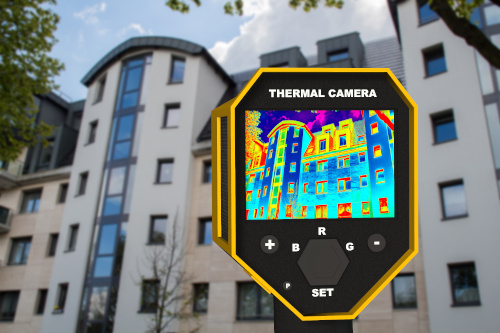 Water is always trying to work its way into your house wherever it can get in. Even the tiniest of entrance areas is enough to allow water to get into your house. There are also places such as piping that can be trouble spots for water going where it doesn’t belong. Thermal imaging is a technique of modern plumbers and leak detectors use to identify leaks. Read on to learn more about thermal imaging and its leak detection benefits.
Water is always trying to work its way into your house wherever it can get in. Even the tiniest of entrance areas is enough to allow water to get into your house. There are also places such as piping that can be trouble spots for water going where it doesn’t belong. Thermal imaging is a technique of modern plumbers and leak detectors use to identify leaks. Read on to learn more about thermal imaging and its leak detection benefits.
What is Thermal Imaging for Moisture Detection
Detecting a leak within a home or commercial building can be a tricky business. There are spots to look out for when investigating for leaks. However, looking all over an entire building could be like looking for a needle in a haystack, a needle that may not be there at all! There was an easier way, though: thermal imaging.
Infrared tech has been used to detect roof failures and to help identify fire and water restoration efforts. A new option for plumbers and leak detectors use is thermal imaging. This process involves using a camera strong enough to see through walls and other building materials. The images will display darker areas where any liquid has pooled. Then the leak detectors can focus their efforts there.
Below are the benefits of using thermal imaging in leak detection.
- Identify Trouble spots in the Roof - Your roof is always being assaulted by the elements. Even with a well-maintained roof, water may find its way inside your home from its top. Moisture here can get trapped leading to rust formation and rotting of your decking. Left untreated, this could compromise your roof’s integrity. Thermal imaging can help look through building materials and insulation to potential trouble spots.
- Prevent Mold Growth - Mold is a severe health concern caused by moist building materials. One of the most dangerous aspects of mold growth in the home is that it can grow behind the walls where you wouldn’t be able to see it. Prevent any mold issues by addressing the water behind walls through thermal imaging.
- Structural Issues - Another trouble spot is your foundation. Noticing visible cracks is typical, but there may be cracks lower down or even below tiling. If this is the case for you, it can be easy to miss water from seeping up into your home. Looking through any thick areas here can help identify problems.
The team at Orlando Leak Detection is here to solve your moisture problems. Our experts use thermal imaging to better identify water and moisture problems before they become too bad. Give us a call today at (407) 618-3665 to schedule a service at your home or business.

